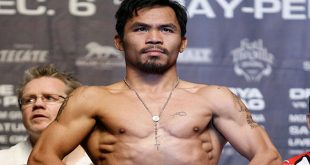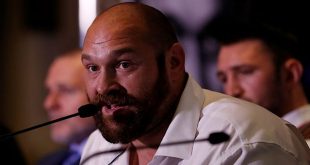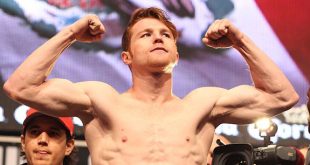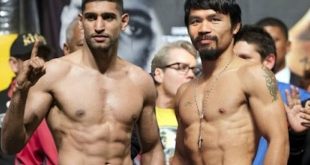| It was a bout that contained arguably the most famous punch in British boxing history. Cassius Clay, the 1960 Olympic Gold Medalist at light heavyweight was unbeaten in eighteen professional bouts. He had already had some impressive names on his record such as | 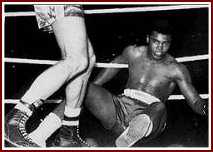 |
Archie Moore, Sonny Banks, Alex Miteff and Doug Jones. Henry Cooper entered the bout perceived as a good European standard heavyweight although he too had fought some of the big names in the heavyweight division. In 1958, he scored perhaps his most important victory in world boxing terms by taking a ten round decision win over contender Zora Folley. Clay was on the march for a title shot and it looked likely that if he got past Cooper, he would get his wish against the winner of the Patterson-Liston title rematch in Vegas the following month.
Clay arrived in England spouting his usual brash predictions. Early in his career, he developed the habit of correctly predicting the round in which his opponent would fall. For this one, he claimed that Cooper would “Fall in five.” He also showed his more vicious side when he referred to Henry as, “A bum and a cripple, not worth training for” He also stated that if he did not beat Cooper in five, then he would not return to the United States for thirty days. Cooper was unmoved by all of this. He was intelligent enough to realize that Clay was good news for both of them at the box office. He also felt that he had the style to trouble the American.
Well Clay certainly was good for box office and 50,000 fans descended to Wembley Stadium in London on a rainy night on June 18 1963. Clay continued to talk the talk as he made his way to the ring in a flashy red dressing gown. He also wore an imitation crown and proclaimed himself Cassius “The King.” When the bout commenced, Clay went into his usual routine of keeping on his toes with Cooper employing his usual tactic of pressing the action. A minute into the bout, Cooper scored his first success, bloodying the American’s nose. It was also noticeable that Cooper’s left hand was troubling Clay.
In round three, a cut opened over Cooper’s left eye. This was an injury that was nothing new to the Englishman as cuts had dogged him his entire career. Cooper continued to press the action with Clay now starting to treat him with contempt by dropping his hands by his side and not even choosing to punch thinking that he had the fight in the bag with the cut.
Round four started with Clay jabbing Cooper. Prior to the start of round four it was evident that Clay’s corner were not at all happy with their man, telling him to cut out the funny business and get down to work. Ten seconds from the end of round four, with the American’s mind apparently elsewhere, Cooper ducked under a Clay left and connected with a crushing left hook that sent the younger man crashing against the ropes and to the canvas.
Clay rose at the count of three and returned to his corner with Angelo Dundee fuming at him. Was Cooper about to shock the world in round five? There was a delay to the start of round five with a tear appearing in Clay’s glove. This gave the younger man sufficient time to recover and he commenced the round fighting furiously to protect his unbeaten professional record. Early in the round, a shocking cut appeared on Cooper’s left eye and his face began to stream blood. The referee had no option but to stop the bout. Clay’s unbeaten record was still intact and his prediction was right once again.
Looking back at this bout, this was part of boxing legend, so many questions to ask. Had the fourth round knockdown happened earlier in the round would Cooper, known as a ruthless finisher, changed boxing history forever? Did the tear in the glove and the delay at the start of round five help Clay? Although legend has it that Angelo Dundee made the tear intentionally to buy Clay time, fight films show that the glove’s tear occurred in the previous session. Would the result have been so different had Cooper not been so prone to cuts? One can go on about the ifs and buts of a fight, but the facts are that Clay produced the win in round five and eight months later, he was the world heavyweight champion.
In his fourth defense, Muhammad Ali defended his title against Henry Cooper in May 1966 at Highbury Stadium, London. British fight fans were hoping that lightning might strike twice, but by now, Ali was now at his peak and Cooper was now thirty-two-years-of-age. Cuts again denied Cooper and the referee stopped the bout in round six.
Ali would defend the title a further five times before events outside the ring ended his reign. Cooper on the other hand returned to fighting at British and European level, ending his career on a contentious note in March 1971 losing an unpopular fifteen round decision to Joe Bugner in March 1971 at the age of thirty-seven. Cooper to this day remains one of British boxing’s best-loved characters and still speaks fondly of his two fights with Ali.
Looking back, this was the bout that probably got me hooked on boxing. Although I was not born when either fight took place, the fact that the fight created so much legend on this side of the Atlantic and that I was told of it many times by people who witnessed it live on TV probably got me interested in the sport and the legend of Ali.
Look for more editorials detailing the history of our great sport coming soon exclusively to SaddoBoxing.com.
 Boxing News Boxing News
Boxing News Boxing News

